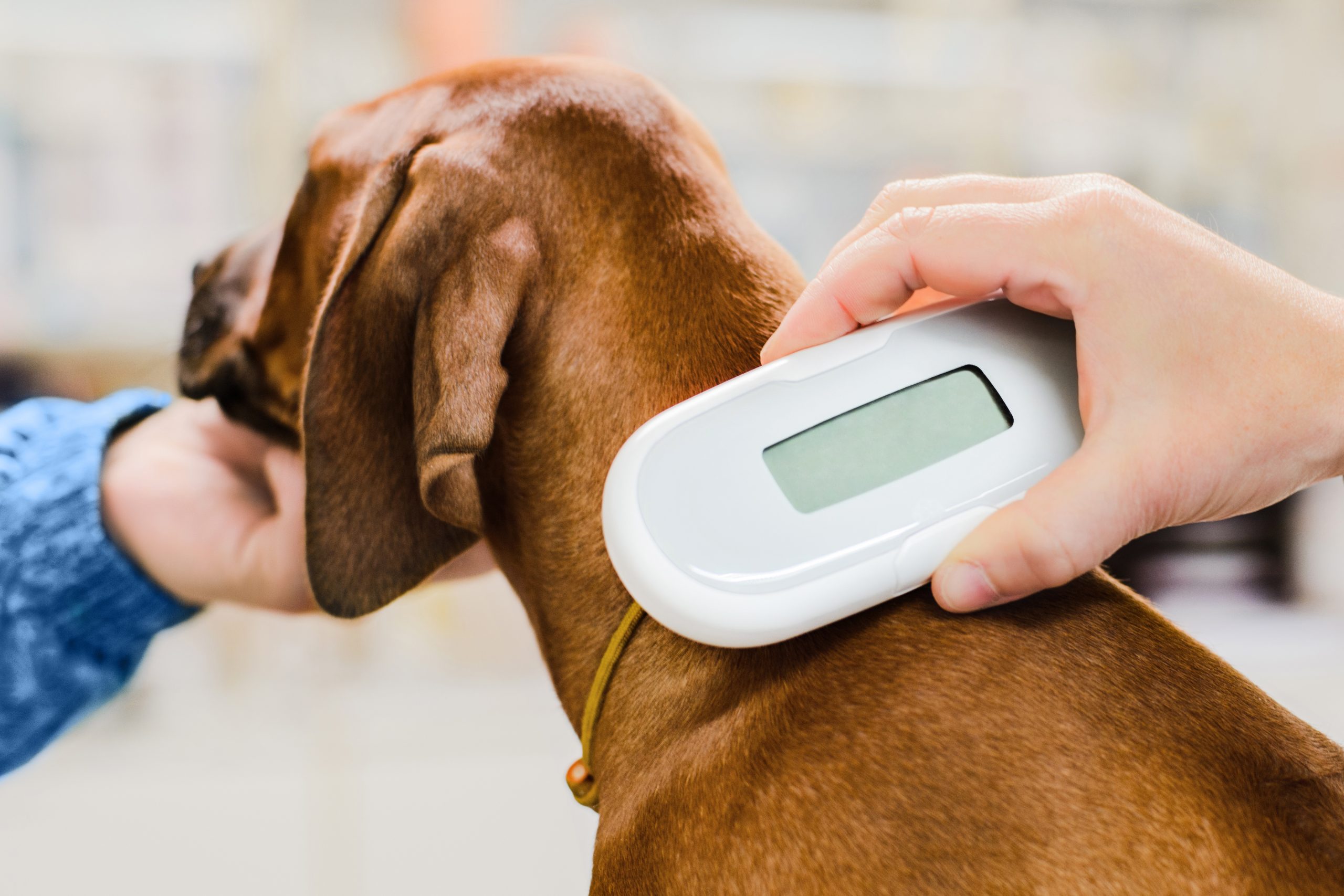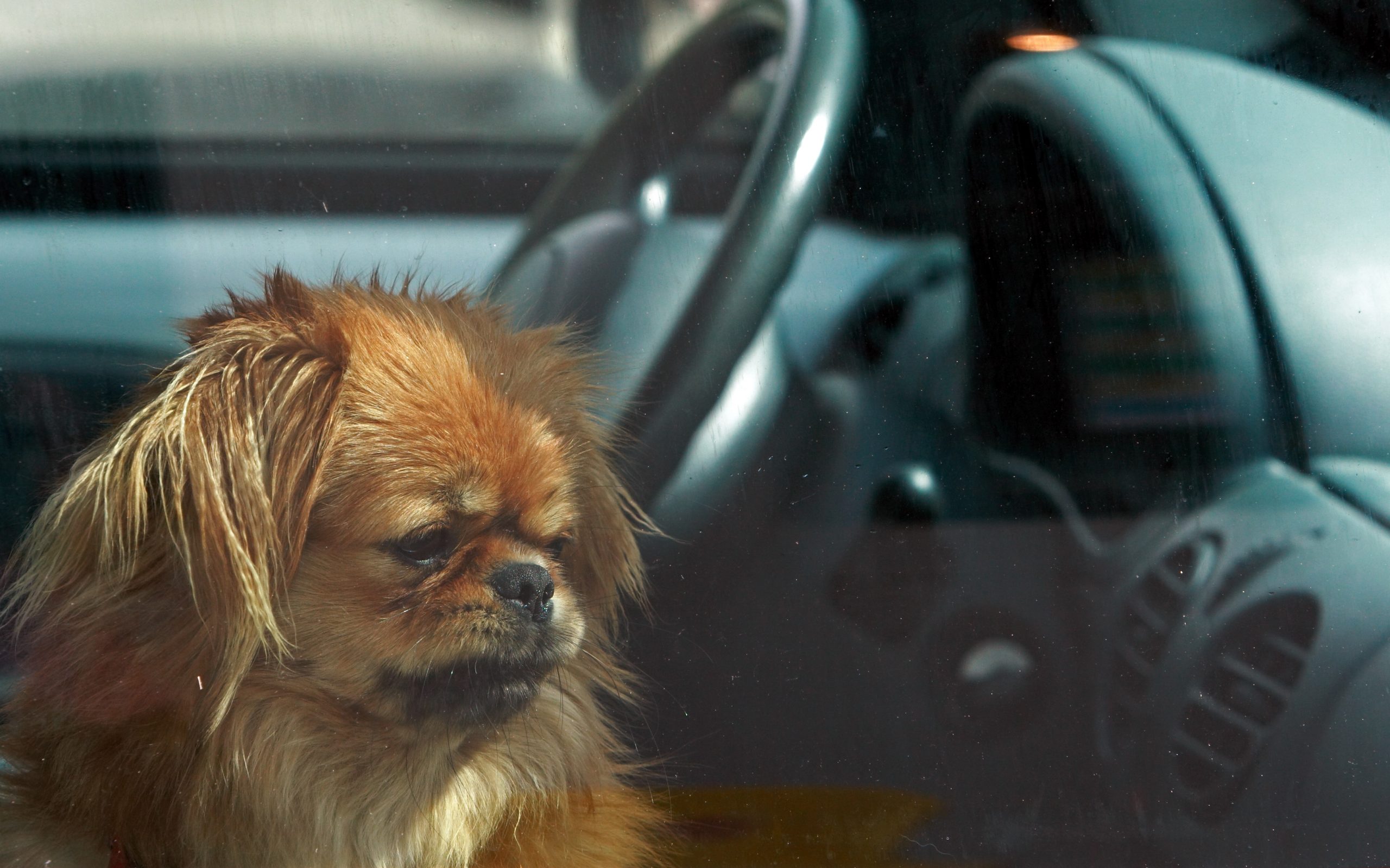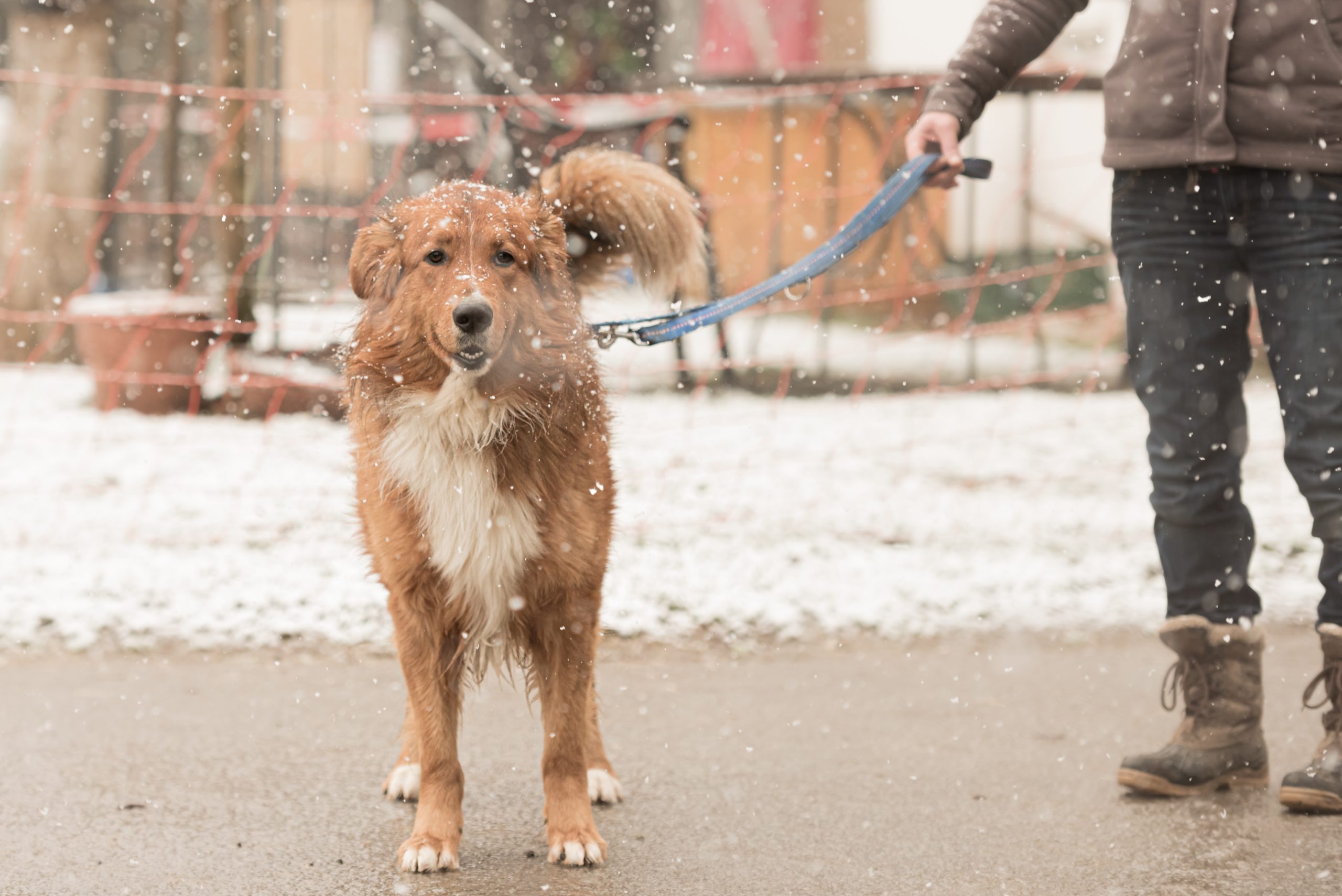-
Adopt
-
Veterinary Care
Services
Client Information
- What to Expect – Angell Boston
- Client Rights and Responsibilities
- Payments / Financial Assistance
- Pharmacy
- Client Policies
- Our Doctors
- Grief Support / Counseling
- Directions and Parking
- Helpful “How-to” Pet Care
Online Payments
Referrals
- Referral Forms/Contact
- Direct Connect
- Referring Veterinarian Portal
- Clinical Articles
- Partners in Care Newsletter
CE, Internships & Alumni Info
CE Seminar Schedule
Emergency: Boston
Emergency: Waltham
Poison Control Hotline
-
Programs & Resources
- Careers
-
Donate Now
 At least once in every dog or cat owner’s life, they have thought about this nightmare scenario – what would happen if their pet was lost or ran away? It is common for our pups to get distracted, confused, or scared at times, whether due to separation anxiety, their prey drives kicking in when they see a rabbit, or fear, especially after hearing loud, startling sounds, such as fireworks or thunder. Cats are forever curious and looking for the next bird or mouse to hunt, regardless of whether it’s just in the backyard or somewhere else. July is National Lost Pet Prevention Month, and we spoke with Dr. Nyla Bent in our Internal Medicine department on ways to help protect and prevent your dog or cat from getting lost.
At least once in every dog or cat owner’s life, they have thought about this nightmare scenario – what would happen if their pet was lost or ran away? It is common for our pups to get distracted, confused, or scared at times, whether due to separation anxiety, their prey drives kicking in when they see a rabbit, or fear, especially after hearing loud, startling sounds, such as fireworks or thunder. Cats are forever curious and looking for the next bird or mouse to hunt, regardless of whether it’s just in the backyard or somewhere else. July is National Lost Pet Prevention Month, and we spoke with Dr. Nyla Bent in our Internal Medicine department on ways to help protect and prevent your dog or cat from getting lost.
Microchipping your pet is essential
Missing pets can be found much more easily thanks to this small metal device. Dr. Bent says all dog and cat owners should microchip their pets. “To put it simply, they’re lifesavers,” she said. “We have had many patients that have come through the Emergency service who would have never been able to find their owners again without the microchips.” Getting chipped is relatively easy; Dr. Bent recommends doing it as part of a routine health checkup. A chip is inserted into the back of a pet’s neck without causing pain, and the transponder remains with the pet for the rest of its life.
it simply, they’re lifesavers,” she said. “We have had many patients that have come through the Emergency service who would have never been able to find their owners again without the microchips.” Getting chipped is relatively easy; Dr. Bent recommends doing it as part of a routine health checkup. A chip is inserted into the back of a pet’s neck without causing pain, and the transponder remains with the pet for the rest of its life.
“There is a misconception that microchips are location trackers, and they’re not,” explained Dr. Bent. Instead, an owner’s name, address, contact number, and primary veterinarian’s information are provided when a microchip is scanned on a lost pet. Pet owners must provide this information at the time the microchip is inserted, and they must update the data if it changes.
“We have had many patients that have come through the ER who would have never been able to find their owners again without the microchips,” said Dr. Bent. “We had one stray arrive on New Year’s, most likely due to fireworks. But the dog had a current microchip, which made reuniting them with their owner much easier.”
Don’t forget your pet’s ID information
 A collar and ID tag is another way to keep your four-footed friend safe if you can’t microchip them. Even better? Adding contact information to your pet’s collar. “Putting ID tags on your pet definitely helps, but frequently, the tags become worn and break off,” explained Dr. Bent. “Collars will sometimes break, too, but having the information on the collar will help if the tag becomes lost.” A collar can be personalized with a pet’s name and owner’s name, as well as a phone number. Dog collars should be worn inside and outside the home to prevent escapes, especially if your pup loves slipping out the front door at any moment.
A collar and ID tag is another way to keep your four-footed friend safe if you can’t microchip them. Even better? Adding contact information to your pet’s collar. “Putting ID tags on your pet definitely helps, but frequently, the tags become worn and break off,” explained Dr. Bent. “Collars will sometimes break, too, but having the information on the collar will help if the tag becomes lost.” A collar can be personalized with a pet’s name and owner’s name, as well as a phone number. Dog collars should be worn inside and outside the home to prevent escapes, especially if your pup loves slipping out the front door at any moment.
Put a GPS tracker on your pet
Unlike a microchip, a GPS device will give you real-time location and track where your pet has wandered. Using a handheld device or mobile phone, a tracker can alert you when your pet has approached or passed a boundary and![]() provide location updates. Pet trackers use satellite information to calculate the location of your pet. In most cases, trackers require a monthly subscription so that the app can always provide accurate geolocation information. Read this article for more details about GPS trackers and general safety tips for your pet.
provide location updates. Pet trackers use satellite information to calculate the location of your pet. In most cases, trackers require a monthly subscription so that the app can always provide accurate geolocation information. Read this article for more details about GPS trackers and general safety tips for your pet.
Learn those basic commands
Aside from improving your dog’s impulse control and helping them learn how to interact with other dogs and humans in a friendly manner, teaching commands like “come,” “sit,” and “stay” are also essential to ensure that your dog remains with you or within your sight and does not run away when something more exciting occurs. Those doggy school sessions may seem daunting, but here are some basic command tips to help make them more manageable.
Walk your dog on a leash at all times
It would be best to always walk your dog (or cat) on a leash to prevent your pet from wandering off and getting lost — good-quality leashes are essential.
There are many types of leashes for all dogs and environments, so research the type and size before purchasing one for your dog. There is one particular style of leash that Dr. Bent doesn’t suggest purchasing – the popular retractable dog leash. “They’re just not safe – and they don’t work,” said Dr. Bent. The leash allows the dog to roam more freely, but owners have little control over the actions of their dogs. Additionally, the thin cord breaks quite easily, particularly when a large dog is at the end; both dogs and humans have suffered serious injuries when it breaks – severe burns, cuts, and amputations have occurred. According to Dr. Bent, a regular leash should be paired with a Martingale collar, which has a looped design and tightens when the dog pulls.
particular style of leash that Dr. Bent doesn’t suggest purchasing – the popular retractable dog leash. “They’re just not safe – and they don’t work,” said Dr. Bent. The leash allows the dog to roam more freely, but owners have little control over the actions of their dogs. Additionally, the thin cord breaks quite easily, particularly when a large dog is at the end; both dogs and humans have suffered serious injuries when it breaks – severe burns, cuts, and amputations have occurred. According to Dr. Bent, a regular leash should be paired with a Martingale collar, which has a looped design and tightens when the dog pulls.
Have your pets neutered or spayed
Besides preventing animal overpopulation, spaying or neutering your pet prevents your pet from wandering away and getting lost. If male dogs and cats aren’t fixed, their instinct to mate is strong, which puts them at risk of getting lost after they mosey away to find a female. If you spay your female dog, it will prevent male dogs from wanting to mate with her. You might not only lose a pet, but you may also have a litter of kittens or puppies that need homes if you aren’t careful. “There are health benefits from spaying and neutering, too,” added Dr. Bent. “Neutering your male dog helps prevent testicular and prostate cancer, and spaying prevents uterine and breast cancers.” The MSPCA-Angell offers convenient spay and neutering clinics in eastern Massachusetts.
Car safety can save lives
 Having been in a car accident two years ago with her dog, Dr. Bent advocates dog seat belts and safety harnesses. “I was in a car accident two years ago with my dog,” explained Dr. Bent. “If she hadn’t been wearing that safety belt, she would’ve gone through the windshield,” said Dr. Bent.
Having been in a car accident two years ago with her dog, Dr. Bent advocates dog seat belts and safety harnesses. “I was in a car accident two years ago with my dog,” explained Dr. Bent. “If she hadn’t been wearing that safety belt, she would’ve gone through the windshield,” said Dr. Bent.
She also doesn’t support letting your dog ride in the passenger seat. “Many people buy car seats for their dogs and put them in the front seat. But I think it’s just too risky,” advised Dr. Bent. Letting your dog ride shotgun gives them access to the car door, and when the door is opened, it creates the perfect escape route. Dogs can even escape if the window is opened too much, especially if they prefer a cool breeze on their face while riding. Check out this article for more tips on traveling with pets and riding in a car.
Keep health documents handy and current
“I have a little folder with my dog’s vaccine records and other health information in a folder that stays with me at all times when I take my dog out with me,” said Dr. Bent. “You never know what could happen, and having easy access to this information is essential.” If your dog goes missing, having proof of ownership (vaccination records, photos, vet information, etc.) can assist in locating your pet. “If you don’t want to carry physical copies, then upload all your pet’s information to your phone. Just make sure you have it ready if needed,” advised Dr. Bent.
Finally . . . keep an eye on your dog or cat at all times
Sometimes, paying attention is the hardest thing to maintain. If you’re walking or in an unfamiliar area, keep your dog on a leash and make sure they wear a Martingale collar. There can be distractions that cause dogs to become excitable or fearful, causing you to drop the leash and for them to run away. “Also, never leave your dog tied to a light pole or parking meter if you have to go into the store,” added Dr. Bent. “Depending on what type of collar you use, the dog could slip out of it, or worse, your dog could be stolen.” Pets are extensions of your family – you wouldn’t let your child wander off, so don’t let your pet.
Martingale collar. There can be distractions that cause dogs to become excitable or fearful, causing you to drop the leash and for them to run away. “Also, never leave your dog tied to a light pole or parking meter if you have to go into the store,” added Dr. Bent. “Depending on what type of collar you use, the dog could slip out of it, or worse, your dog could be stolen.” Pets are extensions of your family – you wouldn’t let your child wander off, so don’t let your pet.
You should call the Animal Control Office in both the town or city where you live and the town or city where your pet went missing if your pet is lost. The MSPCA-Angell receives strays every day from all over Massachusetts, so even if your pet wasn’t lost in Boston proper, please don’t hesitate to contact the MSPCA-Angell if your pet goes missing.



